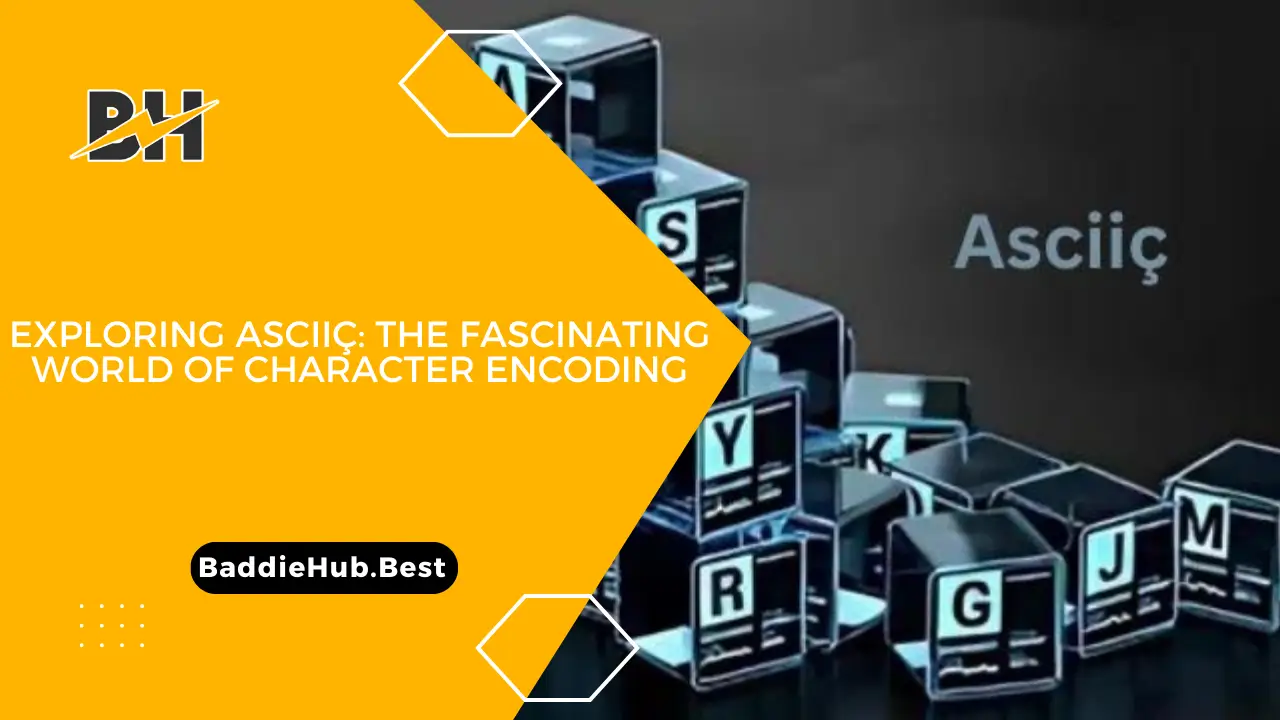Exploring ASCIIç: The Fascinating World of Character Encoding
Introduction
Character encoding is the essence of digital communications; it enables text to be correctly interpreted and processed by a computer. ASCII (American Standard Code for Information Interchange) is a character encoding scheme used as the basis of one of the earliest and most popular methods to collage source code. In this blog post, we discuss about the realm of ASCII: from its origin to composition, usages and still present enough in computers today.
What is ASCII?
The full form of ASCII is American Standard Code for Information Interchange. It is a standard for character encoding, which allows you to represent text in electronic devices. This makes it easier for encoding symbolic information and exactly represents each of these alphanumeric characters instead.
The History of ASCII
American National Standard Institute created the ASCII text based on what was offered in early 1960s It was created to unify the encoding and representation of text, by merging all incompatible reprsentations in use today with character-set standards for long term embracement on various platforms. ASCII became the standard for text representation, allowing different systems to work together.
Structure and Design of ASCII
ASCII defines a 7-Bit binary code to represent characters which means it has support for up to 128 unique values. Every ASCII character is represented by a certain number and that in turn correlates to binary code. This cleanness and efficiency of the design meant that ASCII was well suited to early computer systems which had limited amounts of memory or processing power.
ASCII Character Set
An ASCII character set consists of:
The other is Control Characters (0-31): These are the non-printable characters that older teletypes use to allow things like line feeds and carriage returns which aren’t supported in ASCII hosting.
Alphanumeric (32-126) – this includes letters, both upper and lower cases;; digits; punctuation marks space – essential in text processing!
BackSpace(127): Right: You all are familiar with its function although it is seldom used during the course of a day.
Applications of ASCII
Applications ASCII has the following uses:
Text Files: Plain text files are standard with ASCII encoding and so can be used for local interchange, producing easy ports — In regard to host migration.
Programming: ASCII is used to represent simple English and other characters in many programming languages such as C, Python etc.
Used in Internet Protocols: ASCII has been used as an encoding system for representing text-based data over the internet.
Data Communication: ASCII is utilized in data communication protocols, making sure all the capable devices on either end of the line can understand and interpret text-represented characters correctly.
ASCII in Modern Computing
Even with the arrival of a more complex encoding scheme like Unicode, ASCII is as important today in computing. Because of its simplicity and because it is more quickly read into RAM than UNICODE, even with a far better network performance currently available we still use ASCII for programming, data communication, text file representations etc. A lot of modern character encoding standards are backwards-compatible with ASCII, including Unicode.
Advantages of ASCII
Simplicity: ASCII code is simple to implement and it reduces the cost of hardware.
Interoperability: The ASCII character set is supported by virtually any system, and most devices can process it correctly.
Efficient : The compact representation of ASCII uses least memory and processing power.
Limitations of ASCII
ASCII embodies a 7-bit-character; hence only 128 individual characters can be represented with the ASCII limited character set, which is insufficient for languages using larger characters.
No Multilingual Support: As ASCII only deals in English does not allow input of characters widely popular outside the US, diminishes its usage a lot for international communication.
Extended ASCII and Beyond
Extended ASCII was developed to overcome these limitations of 7-bit encoding by Keying all characters and symbols into a table that assigns values (ranging from zero to 255) for up-to character string. This extended set contains additional characters of multiple languages and special symbols. But even with all those options extended ASCII pales compares to wider ranging electronic standards like Unicode.
Unicode: Next Generation for ASCII
Unicode: Unicode was developed to a character encoding standard that could represent characters in most of the writing systems and make it easier for us to work with varied languages. Unicode characters, with more than a million unique character codes and variable-length encoding in UTF-8 Today, Unicode is the standard for modern computing – yet ASCII remains a key element of its underpinnings.
ASCII Art: Characters Create Creativity
ASCII art is a design technique that makes use of patterns and keywords to create an image. Artists depict intricate and creative representations using characters such as: letters, digits, & symbols ASCII art was one of the most amazing thing in computers early days so it continued till now with out any nonsense!
ASCII in Network Protocols
A lot of networking protocols use fancy ASCII representations for text data. HTTP headers, Email headers and URL encoding uses ASCII characters to maintain compatibility & readability across different systems or networks.
Most Used ASCII Codes Against Their Uses
32 (Space) Space character 33!
65-90 (A-Z): Uppercase Letters
97-122 (a-z): Lowercase letters
The data (digits): 48-57:
13 (CR): This stands for Carriage Return.
10 (LF): It is a line feed.
Future of Character Encoding
Although Unicode is the dominant character encoding standard for both human and computer languages today, ASCII still sets grounds on further development of modern computing. While new encoding standards may be defined in the future, as technology advances at large; ASCII will remain some of fundamental principles how we transmit and represent text.
Conclusion
ASCII has been ‘the gift of tongues’ that permits us to speak with the robots, providing them a straightforward and powerful constitution by which we communicate in content. Though now limited, its effects are still felt in the world of computing today so long as it affects how we archive and share plain text data. Not only does this help us to appreciate a bit of computing history, but also accentuates the role that standardization has played in technology.
FAQs
ASCII vs Unicode – The Ultimate Difference
ASCII (American Standard Code for Information Interchange) is a 7-bit character encoding standard which contains 128 characters, largely with English letters, digits and control devices Unicode, by contrast, is a universal encding standard and can represent well over a million characters with the Unicode repertoire covering virtually every script invented for human language in current or historical use. The first 128 characters of Unicode is the same as ASCII and thus backwards compatible with it.
But why would ASCII be used even now?
Today, we still use ASCII because of its simplicity,elegance as well as legacy. ASCIITill now, many programming languages, protocols and systems are using ASCII to represent text as well control character. In addition, ASCII is simple so it can be used for small subtrees with low memory and power availability, thus maintaining its relevance even in recent years computing devices.
How does extended ASCII and Unicode provide a solution for the drawbacks of standard ASCII?
This is known as 8-bit Extended ASCII, which builds on the original encoding of 7-bits to produce a total of 256 characters. This extension has extra characters for other languages and special symbols but is also restricted compared to Unicode. Having a variable-length encoding scheme also allows Unicode to represent more than one million unique characters, meaning it can contain an enormously vast set of languages and symbols from various scripts – the first character-encoding form that is truly global.













